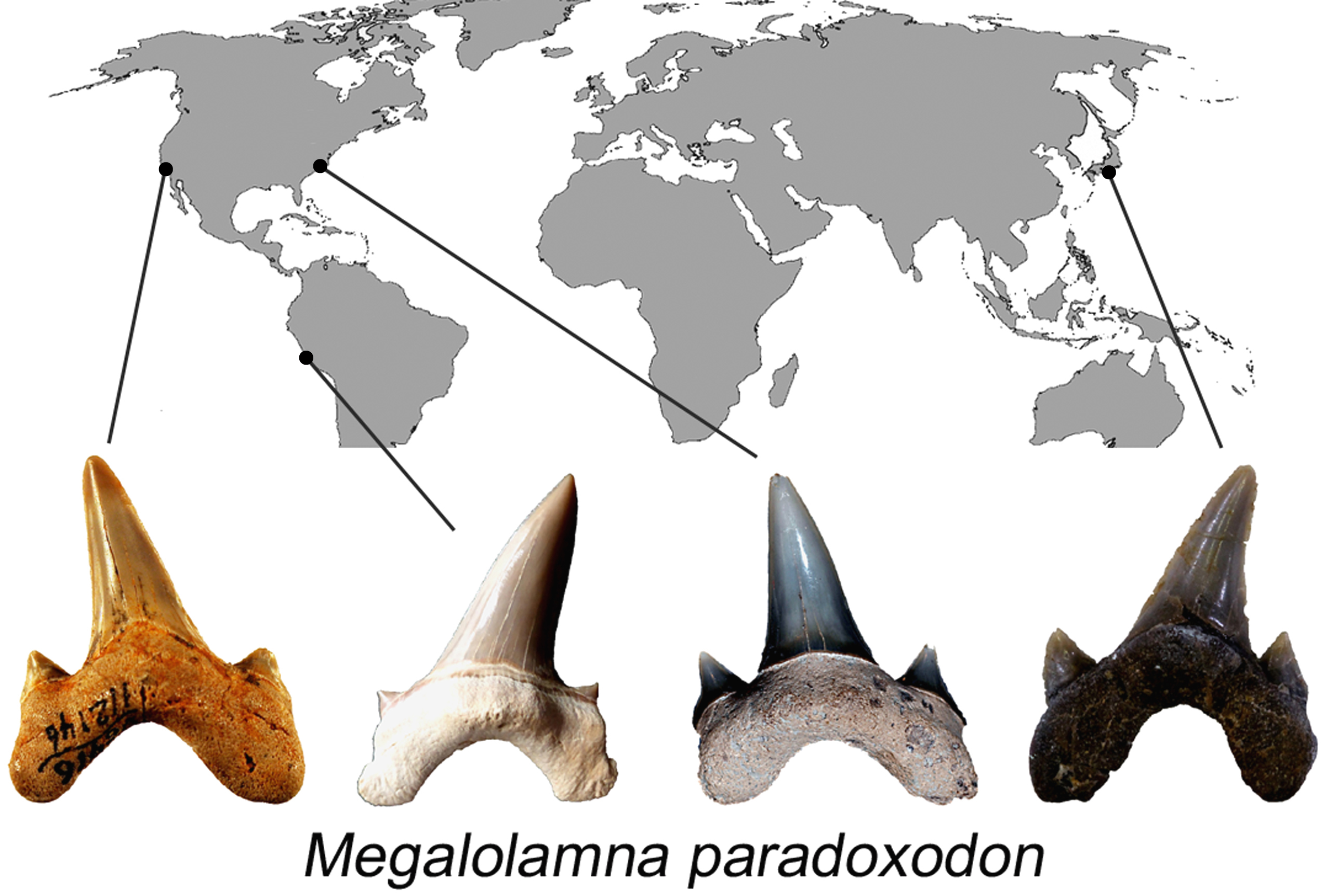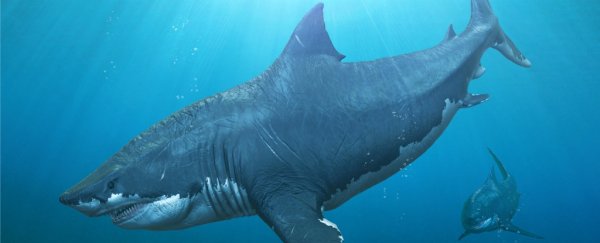Scientists have discovered the remains of a mysterious, car-sized shark, which swam the coastlines of the Atlantic and Pacific oceans around 20 million years ago.
The newly discovered species is a relative of the super-predator megalodon (pictured above), and an ancient ancestor of today's great white sharks - but there's a 45-million-year gap in the fossil record before this new species appeared, leaving a lot of unanswered questions about how the shark evolved, and how long it survived.
"The fact that such a large … shark with such a wide geographic distribution had evaded recognition until now indicates just how little we still know about the Earth's ancient marine ecosystem," lead researcher Kenshu Shimada from DePaul University in Chicago told Laura Geggel from Live Science.
The new species has been named Megalolamna paradoxodon - putting it in a brand new genus of its own. The species name paradoxodon refers to the fact that the shark emerged so suddenly in the geological record, after appearing to have split from its closest relative, Otodus, around 45 million years earlier.
So far, only five of the species' 5-cm-long (2-inch) teeth have been found in California, North Carolina, Japan, and Peru - covering most coastlines of the Pacific and Atlantic oceans.
Based on these remains, the researchers estimate that the shark grew to around 3.7 metres (12 feet) long, making it significantly smaller than its relative, megalodon, which is thought to have reached a humungous 18 metres (59 feet) in length, and lived from 23 to 2.6 million years ago.
But Megalolamna paradoxodon was still large enough to have feasted on medium-sized fish, and would have been just slightly smaller than today's great white sharks, according to the researchers.
You can see its distribution and the teeth remains below:
 Kenshu Shimada
Kenshu Shimada
What sets the new species apart are these strange teeth, which look similar to the teeth of modern sharks - belonging to the genus Lamna - with a few key differences.
"At first glance, teeth of Megalolamna paradoxodon look like gigantic teeth of the genus Lamna, that includes the modern porbeagle and salmon sharks," Shimada told Live Science.
"However, the fossil teeth are too robust for Lamna - it shows a mosaic of dental features reminiscent of the genus Otodus. So, we determined it to be a species new to science that belongs to the family Otodontidae with no direct relationship with Lamna."
These teeth would have been perfect for grabbing and slicing prey, Shimada adds.
More importantly, the discovery impacts our understanding of the shark family tree. In the past, megalodon had been (somewhat contentiously) classified as belongning to the genus Carcharocles, which is part of the extinct Otodontidae family.
But seeing as megalodon and Megalolamna paradoxodon are so closely related, the researchers argue that megalodon should actually be put into the genus Otodus, to reflect its true place in the evolutionary oath of sharks.
"The idea that megalodon and its close allies should be placed in Otodus is not new, but our study is the first of its kind that logically demonstrates the taxonomic proposition," Shimada said in a press release. "Thus it should be referred to as Otodus megalodon from now on," he added.
Further research is now needed to confirm this new classification of megalodon - the shark with a bite more powerful than Tyrannosaurus rex's - but it's fascinating to know that there was a close relative of the giant mega-predator swimming across most of the globe around 20 million years ago.
We're looking forward to finding out more about the elusive Megalolamna paradoxodon, including when and how it disappeared, as more remains are discovered.
The research has been published in Historical Biology.
